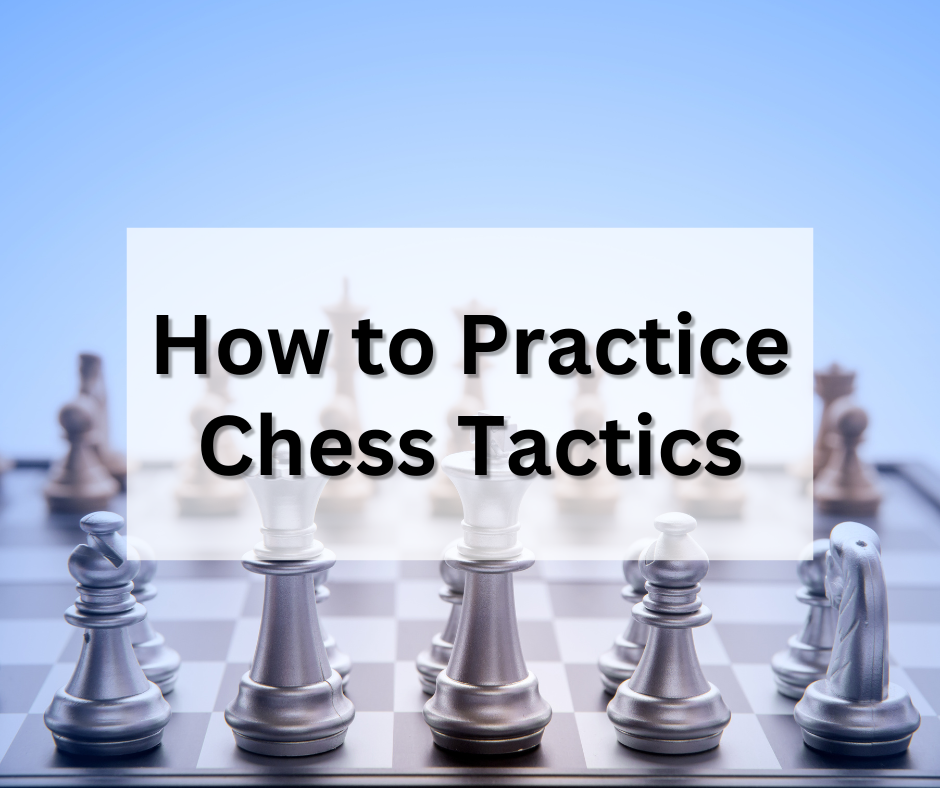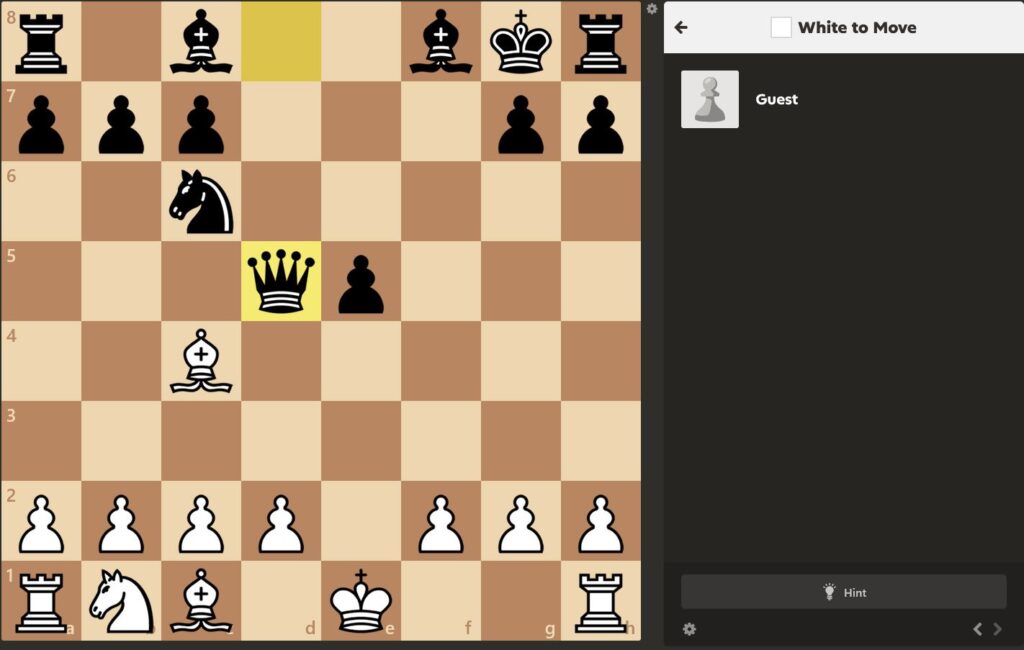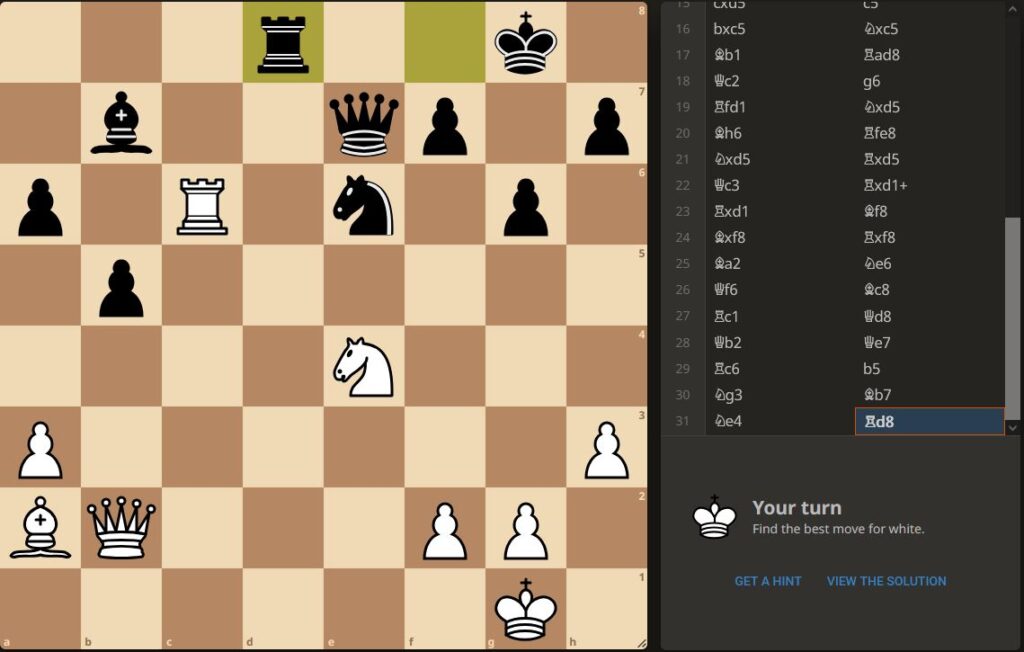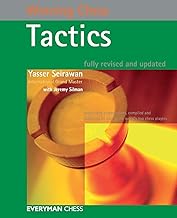Physical Address
304 North Cardinal St.
Dorchester Center, MA 02124
Physical Address
304 North Cardinal St.
Dorchester Center, MA 02124
Ever wondered how top players seem to spot game-winning tactics in seconds? The secret isn’t talent—it’s training. If you want to sharpen your tactical vision and win more games, read on. This guide explains how to practice chess tactics in the most effective way.

When I started playing chess over fifty years ago, it was a different world. The only ways to practice tactics were books and coaches. Unfortunately, my parents couldn’t afford chess tutors. So, I scoured libraries and used bookstores for every chess book I could find. I even checked the Sunday papers for the weekly chess puzzle.
Eventually, the Internet changed everything. Now dozens of apps and sites exist for the sole purpose of training chess tactics. With unlimited puzzles and targeted training, anyone can become a tactical wizard.
Contents
Some apps are better than others. Here are my favorite tools for practicing tactics.
Chess.com is far and away my favorite site for training tactics. You’ll need a premium account for unlimited puzzles and access to all the features, but what you get is invaluable. The app gives you puzzles based on your puzzle rating, which climbs as you improve. It also lets you focus on certain themes if you want to address a specific weakness.

They also have several fun puzzle solving “modes”, such as Puzzle Rush and Puzzle Battle.
Aimchess scours your Chess.com and Lichess games for tactical errors. Aimchess turns those errors into puzzles, which helps correct your most common mistakes. An excellent method of targeted practice.
Again, this requires a paid account.
Like Chess.com, Lichess has a rated puzzle feature that also lets you filter by theme. While it doesn’t have all the bells and whistles that Chess.com does, it does have the advantage of being free.

Like Aimchess, Lichess takes puzzles from real games, but not just your own. This means the puzzles are closer to what you would see over the board, unlike some constructed puzzles.
Any one of these tools will help you progress with your tactics. But knowing HOW to train chess tactics is even more important than knowing which apps to use. Read on to learn how to maximize your tactical training.
If fun is all you’re looking for, then it doesn’t matter how you solve tactical puzzles. But if you really want to improve, you need to approach tactics training the right way.
If you just play the first good move that comes to mind, you aren’t training yourself. To master tactics, you have to do the following:
Now, let’s talk about why these points are so important.
In chess, tactics are short-term sequences of moves. They create an immediate advantage, often involving threats like captures, checks, or checkmate. Tactics rely on patterns such as pins, forks, skewers, and discovered attacks. They exploit an opponent’s weaknesses and gain material or a winning position. (For a more in depth definition with examples, see my post on What Are Tactics in Chess.)
The thing about tactics is that if you miss one, it likely won’t be available again on the next move. Strategy, though, deals with long-term factors. These include controlling files and squares, piece mobility, and pawn structure. Strategic situations can last several moves, if not the entire game.

The purpose of training tactics is…surprise, surprise…to get better at tactics. The hope, of course, is that this will lead to playing better games. This is why your training should emulate game conditions as much as possible. That means no analysis board, no take-backs, and no engines.
The only game condition you should remove is the clock. Yes, time is important, but as you get better at tactics you will also get faster. Even on timed apps (like on Chess.com), it’s better to get puzzles right than to complete them fast.
Tactics determine the vast majority of game results. So, it follows that improving your tactical skills will lead to more wins. But only if you train under game-like conditions.
Did you know that practicing tactics the right way can help your chess game in other ways as well? Here are a few:
Let’s take a closer look at each of the above steps to understand how to get the most out of each of them.

This should be obvious, right? Do the thing you want to get better at. And since tactics is the most important skill in chess, it makes sense to spend the most time on it.
So, how much is enough? That depends on how much time you want to spend on chess altogether. But consistency is more important than total time spent. It’s better to spend a few minutes every day than to spend three hours once per week.
Your subconscious determines what’s important based on how often you do it. Daily routines get prioritized in the brain. But the brain treats occasional activities as simple diversions, not worth remembering. (I’ve oversimplified this, but you get the point.)
Again, speed is not your immediate goal. If you blitz through a hundred puzzles, you might get half of them right. Sure, that could help your pattern recognition a little bit. But you’ll miss other important benefits, like improving calculation and visualization skills.
Even worse, it builds bad habits. Can you win games by getting half your moves wrong? Of course not. So why practice that?
Instead, be deliberate about your puzzle solving (see below).
Before choosing candidate moves, analyze the position to look for clues. Is there a trapped piece? Hanging piece? Exposed king? A king with no escape route?
Most tactical positions contain some sort of clue, often more than one. This is true of both puzzles and actual game positions. Train yourself to look for these until they jump out at you. (You can reinforce this in the last step listed below.)
Also, be aware of material imbalance. Are you down material? Then you need to find a killing blow, as winning a pawn or even piece won’t save the game, or solve the puzzle. That, or you need a stalemate to prevent an outright loss.
A common mistake is picking one move and trying to make it work. This can lead you down a garden path to a failed puzzle.
Instead, you need to generate several candidate moves first. Look for forcing moves, starting with checks (especially double checks!). After that, look at captures, and then finally threats.
If you have too many potential candidate moves, focus first on your opponent’s side of the board. Most winning moves will occur there, both in puzzles and in actual games.
Finally, reject any candidate moves that are obvious errors. That said, be careful not to throw away the gold with the garbage. Sometimes the best move looks like a blunder at first.
As much as possible, don’t make any moves until you’re sure you can see the whole solution. Continue searching for forcing moves on each following move, especially your opponent’s.
On each move, look at the resulting position and see if your solution still looks viable. Did you miss an important defensive resource? Did you forget about a sacrificed piece? If so, you’ll need to reconsider the rest of your moves.
I’ve lost track of how many times I’ve won a piece during a puzzle…only to discover I missed a forced checkmate. One easy way to find better moves is to change your move order to see if it results in something better.

No one gets every puzzle right. When you miss one, stop. Take a moment and find out what went wrong.
Were you lazy? Did you make your move before looked at all the candidates? Were you thinking of the wrong sort of tactic? Was it a visualization issue? Or was it a plain old calculation mistake?
If the same sort of error keeps coming up, you can focus on specific themes to help correct that weakness.
If you don’t understand the solution, or why your solution doesn’t work, use an engine to analyze the position. Another option is to check the puzzle’s comments (available in Chess.com). There will almost always be a good explanation written by someone who made the same mistake.
Finally, ask yourself how you will recognize the same situation next time it comes up. Every tactical position has tell-tale signs. It could be a specific piece alignment, or a piece with a single defender. These signs can point you in the right direction next time you see them.
If you’re serious about improving your tactical skills, a great book can be an excellent asset. They’re also great for when your internet is down!
Books are best for learning specific skills, rather than actual puzzle solving practice. Here are three of the best books to help you sharpen your chess tactics:

This book is perfect for beginners looking to build a solid tactical foundation. Renowned grandmaster Yasser Seirawan explains key tactical themes in an engaging way. He reinforces each concept with practical examples and exercises. This makes it an excellent starting point for players who want to master tactics.
Looking to take your tactical training to the next level? The Woodpecker Method offers a unique approach. The idea is simple: Repeat a set of tactical puzzles over a period of time. This reinforces both pattern recognition and calculation speed. Titled players use this method to improve their tactical vision. It’s a must-try for serious learners.
This book is ideal for players who want a puzzle-based approach to learning tactics. It contains 1001 exercises that focus on basic tactical motifs. The progressive difficulty makes it a great resource for structured daily training.
Each of these books offers a different approach to tactical training. Whether you prefer practice or explanations, there’s a perfect fit for your study routine.
YouTube is an excellent resource for learning and practicing chess tactics. Experienced coaches break down tactical patterns and explain key concepts. Here are three of the best YouTube channels to sharpen your tactical skills:
Remote Chess Academy is a fantastic channel for learning a grandmaster’s thought process. GM Igor Smirnov explains tactical patterns in a clear and easy-to-understand manner. More than this, he explains exactly how a grandmaster assesses a position.
Dr. Can’s Chess Clinic is a hidden gem. As a cognitive scientist, he knows exactly how to achieve deep learning. This means his lessons are not only easy to remember–they’re impossible to forget. Plus, his teaching style makes complex ideas easier to grasp. This makes his channel a great resource for players of all levels.
While Hanging Pawns covers many chess topics, the channel includes excellent tactical lessons. The instructional videos provide both explanations and interactive problem-solving. This helps reinforce key tactical themes.
Each of these channels provides high-quality lessons to help you train tactics. Whether you prefer lessons or puzzles, these channels will sharpen your tactical skills.
Courses offer much deeper teaching than YouTube videos can provide. That’s why I’m a big fan of spending a little money to get the learning I need in one spot. Here are three of the best sources for tactical training courses:
Remote Chess Academy offers high-quality courses designed to improve your tactical skills. Beyond mere tactics, they also teach calculation skills, and strategic chess vision. In all his courses, Smirnov and his fellow authors share how grandmasters thinks about a position. Talk about a short-cut to mastery!
📌 Recommended Course: Winning Tactical Patterns. A deep dive into tactical motifs and how to spot them in real games.
Chessable is one of the best platforms for structured chess training. Their courses use spaced repetition to reinforce learning. Dr. Can’s courses focus on recognizing specific elements of important positions. This makes for fast, deep, and permanent learning.
📌 Recommended Course: Fundamental Chess Calculation Skills. A fantastic resource for improving your ability to find winning moves.
Chess.com doesn’t sell individual courses. Instead, their premium membership grants unlimited access to a vast library of courses. You watch lessons from grandmasters, and follow training plans to sharpen your skills.
📌 Recommended Course: Winning With Tactics. A great course for beginners that covers fundamental tactical patterns with interactive examples.
Each of these platforms offers unique benefits. Whatever learning techniques you prefer, these sources will help you master chess tactics. And it’s faster than trying to find the right videos on YouTube.
If you want to win more games and improve your chess rating, tactical training isn’t optional—it’s essential. The ability to spot winning tactics can turn lost positions into victories. It lets you seize every opportunity your opponent hands you.

But remember, quality matters more than quantity when practicing tactics. Blitzing through hundreds of puzzles won’t help you in real games. Instead, take your time, and follow each of the steps listed above. Developing strong tactical intuition takes patience and conscious effort.
So why wait? Start practicing today! Pick up one of the recommended books. Grab a structured course. Dive into some tactical exercises on your favorite platform. Every puzzle you solve brings you one step closer to becoming a more dangerous player.
[…] spend most of your study time on tactics (at least to start with). I’ve written a post on how to study tactics, but here I want to take this concept […]
[…] best way to train tactics is through solving puzzles. Start with random puzzles to test your general tactical awareness. Then […]